Bodybuilding
Abs Exercises For Bodybuilders

Bodybuilding is a great way to stay fit and healthy. It requires dedication, discipline, and a lot of hard work. A strong core is essential for any bodybuilder, and abs exercises can help you build a strong core. By doing abs exercises regularly, you can strengthen your abdominal muscles and improve your overall performance in the gym. This article will discuss some of the best abs exercises for bodybuilders to help them reach their goals faster.
We will also examine how these exercises can benefit your health and well-being. So if you are looking to take your bodybuilding game to the next level, read on to learn more about abs exercises for bodybuilders!
Every Body Can Work On Their Abs
Everyone coming to the gym want to work abdominal muscles regardless of sex or opinions about practicing bodybuilding. The main reason is that strong abs are often associated with a nice figure and a great-defined waist.
Along with this, strengthening the abs muscles has the role of preventing all types of injuries that might appear in the lower spine.
Abs exercises are a popular way for people of all ages and fitness levels to improve their core strength and tone their abdominals. They can be done in the gym, at home, or outdoors.
While many different types of people do abs exercises, some of the most common include athletes, bodybuilders, fitness enthusiasts, and those looking to lose weight.
Each type of person has a unique set of goals when doing abs exercises, and they use different techniques to achieve their desired results.
Performing ABS Exercises Correctly
The most important movement specific to all abdominal muscles is flexing the trunk from the median region. One of these exercises is crunch and its variation. It is one of the best-known and largely used exercises. It includes lifting the trunk horizontally while the body is lying or declined and with face up.
The legs remain fixed during the exercise under the trellis or are blocked by a training partner. With hands behind your head, get up to 70-90 degrees so the abdominal muscles remain firm. Descend slowly, keeping the abdominal contraction, and repeat without touching the floor at the bottom of the exercise.
The proper breathing should be this way: exhaling is explosive at the upper point of the exercise, and inspiration occurs during the trunk down to the starting position. This exercise knows many forms of execution in bed, declined to 30 degrees or 90 degrees (the trellis, upside down).
Feet In Air
It can also be done with feet in the air (at right angles), and calves parallel to the groundwork supported by the bank. As we said above, these core exercise has many variations. One of these exercises is reversed crunch. Although it is like a regular crunch, the execution of this exercise is the opposite.
Supine with trunk stuck to the seat, legs at 90 degrees (thighs perpendicular to the ground), and your hands holding the bank. Maintaining a constant angle between thighs and calves, tense your abs to lift your pelvis to the chest.
The top position should be that bank balances not touch, and his knees close to the chest. Back up in position touching the floor basin, and then repeat. Hold your breath while climbing up your legs to the chest, which is the most difficult part of the exercise. On superior position expires, then breathe while down.
The Oblique Crunch
The third exercise is the oblique crunch. This is a variation of traditional crunch but especially the oblique abdominal muscles. From supine, with shoulders on the floor, hands behind your head, rotate your hips to 90 degrees to the side, and bend your knees—contract oblique muscles to lift your head and shoulders off the floor. In a superior position, the trunk should be 30 degrees from the ground.
Come back to the initial position and repeat the movement. At the end of the set, rotate your hips to 90 degrees in the opposite direction and resume exercise. About the right breathing, take the breath in the superior position when the umbilical muscles fully contract the initial starting position.
Must Read: How to Get Six Pack Abs Fast with Proven Steroids?
Abs Crunch Machine Exercises:
These exercises very effectively isolate the abdominal and intercostal muscles. The execution of the exercise is like a traditional crunch, with the difference that, in this case, we depend on the machine we work on.
The main advantage of the crunch machine is its ergonomics which allows the execution of many repetitions without causing pain to your back, neck, or thigh.
The disadvantage is the high price of these machines, which break down relatively quickly. That’s why the classical methods are more recommended, whereas they do not cost you money and will not break anyway.
Remember that all exercises described above can be performed with or without weights depending on the number of repetitions you do. If you use weights (discs), they will be set with hands crossed on his chest and selected so you can perform at least 20-25 reps.
Must Read: Define Your Abs Muscle With Roman Chair Sit Ups
Regarding abs muscle, the number of repetitions is a very important detail, whereas fortification of the abdominal wall is more important than brute muscle. If you want to achieve visible results for middle abdominal muscles, it’s recommended to perform each workout in at least 3 sets of 20-50 reps. These four types of crunch are very effective in strengthening the abs muscle. Add to this ingredient a proper diet, and you will get great results.
Benefits of Ab Exercises for Bodybuilders
Below are some of the benefits that going to the gym and doing abs exercises can have on the bodybuilder:
- Keeping the abdominal area toned and tight is important for supporting the body's major joints.
- The muscle can also be an energy source for high-intensity activities like weightlifting.
- Ab exercises can help prevent future back problems like herniated discs, sciatica, and slipped disks.
- Doing ab exercises routinely increases lung capacity, which allows for greater endurance during an aerobic activity like running long distances or cycling long distances.
- Ab exercises involve the abdominals that target other muscle groups.
Abs For Other Athletes
Athletes are a group of people mostly made up of physical fitness enthusiasts. While there are many different types of athletes, they are all concerned with improving their strength, power, and performance.
Athletes often do ab exercises in a circuit to get a full body workout without having to leave their gym or train outdoors. If an athlete enters the gym searching for something that will make them stronger and faster or help them perform better on the field or track, they usually look for exercises targeting the lower abs.
These workouts can be done at home because athletes can access equipment like medicine balls, kettlebells, and a wide variety of free weights. When doing ab exercises in a circuit, athletes usually start with the basic crunches and then move on to more advanced abdominal movements afterward.
At the end of their ab workout, they may also add weight lifting for other muscle groups like the chest or biceps. Other times, athletes will do just one set of crunches at the beginning before moving on to dynamic moves like V-sits or bicycle kicks later in their workout.
Other Types of Exercises to Build Strong Abs
Three types of exercises are commonly performed for the abdominal muscles: sit-ups, crunches, and planks. Each has a different purpose but requires a strong core to execute correctly.
How to do sit-ups
Sit-ups are performed by using your arms to raise your torso quickly and then lowering it back down. They are done when you're on the ground and in a plank position, but some people like to do them by leaning backward on their forearms or holding onto their ankles.
How to do crunches
Crunches are performed using your hands, palms down against the ground in an inverted "J" shape, and then pushing up into the air while bending your hips towards one side. They can also be done with other body parts, such as knees bent, or toes pointed out.
How to do planks
Planks are performed by placing your forearms or elbows on the floor and supporting yourself on your hands and toes. They may also be held for 45 seconds to 1-minute periods.
Overall
As a bodybuilder, having strong and toned abs is essential for achieving your desired physique. However, performing abdominal exercises incorrectly can lead to injury or, even worse, no results. We have provided information on performing abdominal exercises correctly and safely for bodybuilders.
We've also examined the different types of abs exercises available, the correct form for each exercise, and how to effectively target your core muscles for maximum results. You can build strong and toned abs quickly by following the Abs exercises for bodybuilders we have discussed!
Bodybuilding
Mastering Bodybuilding in 2025: Top Fitness Tips for Success

Bodybuilding is more than just a sport; it's a lifestyle that requires dedication, discipline, and a thorough understanding of fitness principles. As the world of fitness continues to evolve, bodybuilders must stay updated with the latest trends, techniques, and scientific advancements to achieve their goals. In 2025, several innovative approaches are redefining bodybuilding. Here are essential fitness tips for bodybuilders to excel this year.
Read More: Bodybuilder Winter Clothing: Staying Warm and Stylish
Embrace Technology-Driven Workouts
In 2025, technology plays a significant role in bodybuilding. Wearable devices, fitness apps, and virtual reality (VR) training are now integral components of an effective workout regimen.
Wearable Devices
Modern wearables track everything from heart rate and sleep patterns to muscle activation and caloric expenditure. Utilize these devices to monitor your progress and make data-driven adjustments to your training and nutrition plans.
Fitness Apps
Leverage fitness apps for customized workout plans, progress tracking, and virtual coaching. Many apps now incorporate artificial intelligence to provide personalized feedback and recommendations.
Virtual Reality Training
VR technology offers immersive workout experiences, allowing bodybuilders to simulate different training environments and scenarios. This can enhance motivation and add variety to your routine.
Focus on Functional Strength
While hypertrophy (muscle growth) remains a primary goal, functional strength is gaining importance. Functional strength training improves overall performance, reduces the risk of injury, and enhances daily activities.
 Check Out Our1 4 Weeks Quality Strength & Lean Muscles
Check Out Our1 4 Weeks Quality Strength & Lean Muscles
Compound Movements
Incorporate compound exercises like squats, deadlifts, and bench presses. These movements engage multiple muscle groups and joints, promoting balanced strength development.
Core Stability
Prioritize exercises that strengthen the core, such as planks, Russian twists, and leg raises. A strong core supports better lifting mechanics and reduces the risk of lower back injuries.
Optimize Nutrition for Muscle Growth and Recovery
Nutrition is the cornerstone of successful bodybuilding. In 2025, the focus is on personalized nutrition plans tailored to individual needs and goals.
Protein Intake
Ensure adequate protein intake to support muscle repair and growth. Aim for 1.6 to 2.2 grams of protein per kilogram of body weight per day, depending on your training intensity and goals.
 Click Here to Buy SynthaTrope By SynthaPharma
Click Here to Buy SynthaTrope By SynthaPharma
Nutrient Timing
Pay attention to nutrient timing to maximize muscle recovery and growth. Consume protein and carbohydrates within 30 minutes post-workout to replenish glycogen stores and kickstart muscle repair.
Supplements
Utilize supplements wisely. Creatine, branched-chain amino acids (BCAAs), and omega-3 fatty acids are popular choices for enhancing performance and recovery.
Prioritize Mental Health and Mindfulness
Mental health is increasingly recognized as a critical component of overall fitness. Incorporating mindfulness practices can improve focus, reduce stress, and enhance performance.
Meditation
Incorporate meditation into your daily routine to reduce stress and improve mental clarity. Mindfulness meditation can enhance your mind-muscle connection during workouts.
Visualization
Use visualization techniques to mentally rehearse your workouts. Visualizing successful lifts and achieving your goals can boost confidence and motivation.
Rest and Recovery
Prioritize rest and recovery to prevent burnout and overtraining. Ensure you get 7-9 hours of sleep per night and incorporate rest days into your training schedule.
Leverage Advanced Training Techniques
Advanced training techniques can help break through plateaus and stimulate muscle growth. In 2025, several methods are gaining popularity among bodybuilders.
Blood Flow Restriction (BFR) Training: BFR involves restricting blood flow to the muscles during low-intensity exercises. This technique can enhance muscle growth and strength without the need for heavy weights.
Eccentric Training: Focus on the eccentric (lowering) phase of exercises. Eccentric training can stimulate greater muscle damage and growth compared to traditional concentric movements.
Periodization: Implement periodization into your training plan. Varying the intensity, volume, and type of exercises can prevent plateaus and ensure continuous progress.
Incorporate Recovery and Mobility Work
Recovery and mobility are essential for preventing injuries and maintaining optimal performance. In 2025, bodybuilders are paying more attention to these aspects of training.
Foam Rolling and Myofascial Release: Use foam rollers and massage balls to release muscle tightness and improve flexibility. Regular myofascial release can reduce soreness and enhance recovery.
Stretching: Incorporate dynamic stretching before workouts and static stretching after workouts. Stretching improves range of motion and prevents muscle imbalances.
Cryotherapy and Hydrotherapy: Explore recovery techniques like cryotherapy (cold therapy) and hydrotherapy (water therapy) to reduce inflammation and accelerate muscle recovery.
Engage in Continuous Learning and Community Building
The fitness industry is constantly evolving, and staying informed is crucial for success. Engage in continuous learning and connect with the bodybuilding community for support and motivation.
Educational Resources: Read books, watch videos, and attend seminars to stay updated on the latest research and trends in bodybuilding.
Community Engagement: Join online forums, social media groups, and local bodybuilding clubs. Sharing experiences and knowledge with fellow bodybuilders can provide valuable insights and encouragement.
Professional Guidance: Consider working with a certified personal trainer or coach. Professional guidance can help you optimize your training and nutrition plans, ensuring you're on the right track.
With your FB Plus subscription or active FB Plus Pass, you now have access to 124 weeks of our most popular workout programs, which typically sell for $10-$30 each. Additionally, our popular 4-week Meal Plan is included. This is on top of the 38 Challenges and Programs that are already available to Plus members.
We've also introduced a new feature that many of you have requested. To assist you in choosing your next program, you can now preview each day of any program from its detail view. This feature lets you see all the included workout videos and content before you schedule it, ensuring you know exactly what to expect.
Conclusion
In 2025, bodybuilding is more than just lifting weights; it's a holistic approach to fitness that encompasses technology, nutrition, mental health, and advanced training techniques. By embracing these fitness tips, bodybuilders can achieve their goals, stay injury-free, and enjoy a fulfilling fitness journey. Remember, consistency and dedication are key to success in bodybuilding. Stay committed, keep learning, and most importantly, have fun on your path to becoming the best version of yourself.
Bodybuilding
Top Video Games for Bodybuilders in 2025

There are several video games that can be great for bodybuilders, combining fitness and fun! Here are some of the best options:
Ring Fit Adventure (Nintendo Switch)
The game uses the Ring-Con and Leg Strap to guide you through various exercises and adventures. It's a fun way to get a full-body workout while playing a game.
Fitness Boxing 2: VR Boxing Remastered (PlayStation VR)
It offers a full-body boxing workout with a variety of punches and combos. It's a great way to improve your fitness while enjoying a virtual boxing experience.
Must Read: Marvel-Inspired Training Clothing on Amazon
Just Dance 2024
This popular dance game gets you moving to the beat with a variety of songs and dance routines. It's a fun way to burn calories and improve your coordination.
Zumba Fitness
Burn It Off (Nintendo Wii): This game offers a fun and energetic Zumba workout, perfect for those who enjoy dancing and want to get a good cardio workout.
Yoga for Beginners
If you're looking for a more relaxing workout, yoga games can help improve flexibility and reduce stress. Many of these games offer guided yoga sessions that you can follow along with.
Gym Tycoon
This game lets you build and manage your own gym, complete with various workout equipment and fitness classes. It's a great way to learn about different exercises and how to create effective workout routines.
The Sims 4: Fitness Stuff Pack
This expansion pack for The Sims 4 adds fitness equipment and activities to the game, allowing you to improve your character's fitness and join the athlete career.
Grand Theft Auto: San Andreas
While not a traditional fitness game, this classic game includes bodybuilding activities that can help your character gain muscle and improve fitness.
Knockout Home Fitness (Nintendo Switch)
This game offers a variety of boxing workouts that can help improve your strength and endurance.
Gym Simulator 24 (PC)
In this simulation game, you can build and manage your own fitness empire, creating workout routines and managing gym equipment.
Let's Get Fit (Nintendo Switch)
This game focuses on pure workouts, allowing you to set programs and follow along with digital trainers for a customized fitness experience.
Beat Saber (VR)
A popular VR game where you slash blocks to the beat of the music, providing an intense full-body workout.
Synth Riders (PlayStation VR)
This game combines freestyle dance and fitness, offering high-tempo tracks and multiplayer modes for a fun and energetic workout.
Yoga Master (PlayStation)
Designed by professional yoga coaches, this game offers a variety of yoga lessons and poses to improve flexibility and reduce stress.
Les Mills Bodycombat (PlayStation VR)
A martial arts-inspired workout game with a range of workout plans and coaching to keep you motivated.
OhShape Ultimate (PlayStation VR)
This game provides a full-body cardio workout with six sessions and two difficulty levels, designed to engage every part of your body.
These games offer a mix of cardio, strength, and flexibility workouts, making them great additions to your fitness routine.
Related Article: Supplemental Breast Milk for Bodybuilders
Bodybuilding
2nd Edition of Natural Bodybuilding Competition Facts

Natural bodybuilding competitions are designed to promote and celebrate athletes who build their physiques without the use of performance-enhancing drugs. These events emphasize fair play, health, and the natural development of muscle mass and definition.
The second edition of natural bodybuilding competitions has gained momentum globally, particularly focusing on drug-free athletes. These competitions are hosted by various organizations like the INBA/PNBA (International Natural Bodybuilding Association/Professional Natural Bodybuilding Association) and OCB (Organization of Competitive Bodybuilders).
In 2024, several notable events have been planned, including the INBA Natural Universe and INBA World Cup, both of which emphasize natural bodybuilding through rigorous drug testing policies. These events aim to showcase competitors who adhere to strict drug-free protocols, and winners often earn pro cards allowing them to compete in higher-level professional competitions.
These competitions focus on categories like men's bodybuilding, classic physique, and women's figure and bikini, among others. Athletes undergo polygraph and urine tests to ensure compliance with natural bodybuilding standards. The winners often receive medals, trophies, or pro status
-

 Steroids2 years ago
Steroids2 years agoVOX Testing: Why Bodybuilders Must Have It Tested Regularly
-

 Steroids2 years ago
Steroids2 years agoShavers and Other Body Grooming Equipment for Bodybuilders In 2023
-

 Steroids2 years ago
Steroids2 years agoChatGPT and Other Avenues to Find Great Bodybuilding Coaches
-

 Steroids2 years ago
Steroids2 years agoBest Oil Recommendations Before Competition for Subtle Shimmer
-

 Steroids2 years ago
Steroids2 years agoPowerlifting Vs Power Building: Find Out the Big Difference and When to Shift Between the Two
-

 Nutrition1 year ago
Nutrition1 year agoEverything Nutritional Food: What’s Too Much Or Too Little
-

 Anabolic Steroids1 year ago
Anabolic Steroids1 year agoLegality of Anabolic Steroids In Latin America
-

 Bodybuilding Products12 months ago
Bodybuilding Products12 months agoTelmisartan In Bodybuilding: An Expert’s Advice
-

 Beginners2 years ago
Beginners2 years agoTren Cycle for Beginners
-

 Bodybuilding1 year ago
Bodybuilding1 year agoList of FDA-Approved Peptides
-

 Bodybuilding2 years ago
Bodybuilding2 years agoCompetition Prep Cycle for Pro Bodybuilders
-

 Bodybuilding1 year ago
Bodybuilding1 year agoChia Seeds in A Bodybuilder’s Diet: An Expert’s Advice
-

 Anabolic Steroids11 months ago
Anabolic Steroids11 months agoHow Much Do You Know About B-AET? A Fat Burner You’ve Been Missing
-

 Bodybuilding7 months ago
Bodybuilding7 months agoPrimal Movements: Our Ultimate Guide for Maximum Results
-

 Steroids11 months ago
Steroids11 months agoAnadrol Cycle: Benefits, Doses, Alternatives, etc.
-

 Anabolic Steroids8 months ago
Anabolic Steroids8 months agoJoint Stiffness: How to Manage It While on AAS
-

 Product Reviews10 months ago
Product Reviews10 months agoTop Vitamins for Skin Health
-

 Steroids9 months ago
Steroids9 months agoOmnitope (Oxytocin)
-

 Bodybuilding1 year ago
Bodybuilding1 year agoHow Much Is Too Much Cardio? Understanding Heart Rate Zones
-

 Bodybuilding8 months ago
Bodybuilding8 months agoHow Effective is Bone Broth for Recovery?
-

 Steroids10 months ago
Steroids10 months agoMajor Bodybuilding Peptides Explained
-

 Bodybuilding9 months ago
Bodybuilding9 months agoHormone Replacement Therapy (TRT) Cycle Guide
-

 Steroids8 months ago
Steroids8 months agoSleeping Positions for Effective Muscle Recovery
-

 Anabolic Steroids1 year ago
Anabolic Steroids1 year agoStart The New Year Strong With These Tips
-
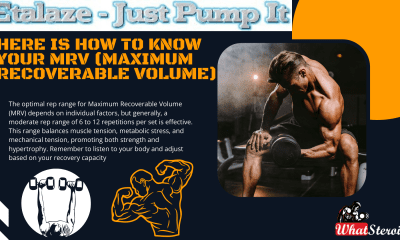
 Bodybuilding10 months ago
Bodybuilding10 months agoHere Is How To know Your MRV (Maximum Recoverable Volume)

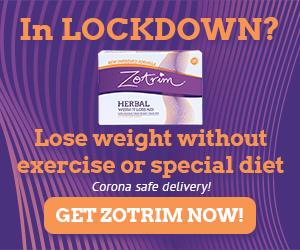

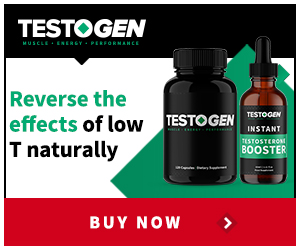

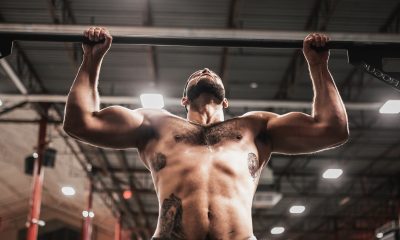





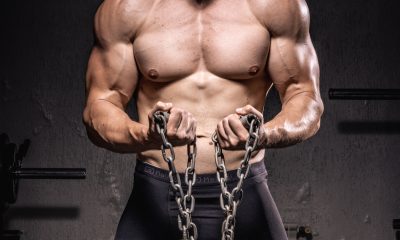

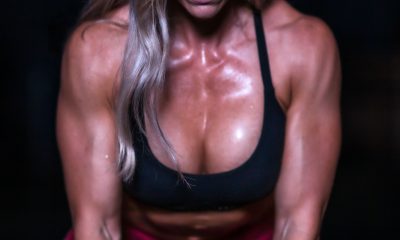







 Click here to buy 1-Test Cyp/DHB 100 by Dragon Pharma
Click here to buy 1-Test Cyp/DHB 100 by Dragon Pharma









